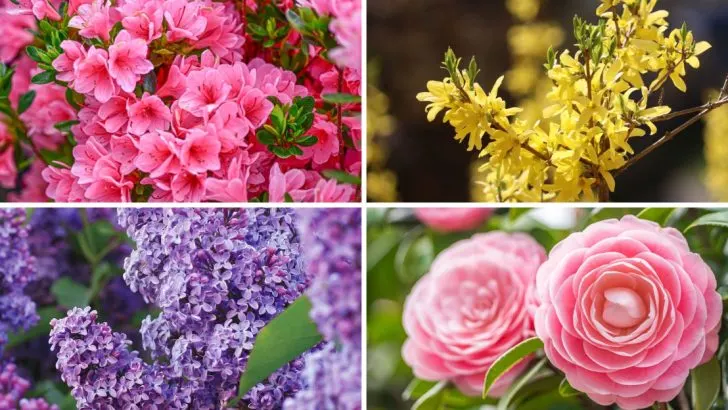Hydrangeas get a lot of love—and when they bloom well, they absolutely deserve it. But if you’ve ever had a summer where they barely showed up or seemed to sulk for no clear reason, you’re not alone. They’re known for being a bit unpredictable, and depending on your soil, weather, or pruning habits, they might not always put on the show you’re hoping for.
The good news is there are plenty of flowering shrubs that are more consistent, and honestly, just as beautiful. These are the ones that don’t need as much coaxing and still come through year after year with solid blooms. If you’re looking to fill your yard with color and not have to second-guess what went wrong, these reliable bloomers are worth considering.
Azalea
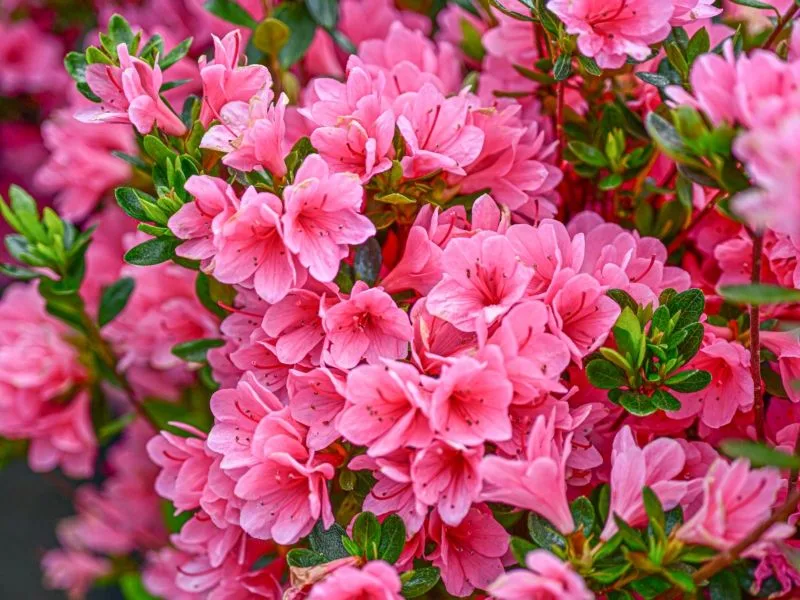
With its vivid blooms, Azalea captivates gardeners seeking a reliable splash of color. Its resilience in various climates makes it a favorite. Known for thriving in acidic soil, this shrub ensures a dazzling display each spring.
Azaleas require minimal care, making them ideal for busy gardeners. Their compact form fits well in small gardens or as part of a larger landscape. Its versatility extends to containers, offering flexibility in design.
Did you know? Azaleas symbolize temperance and passion, a blend as intriguing as their beautiful blooms.
Forsythia
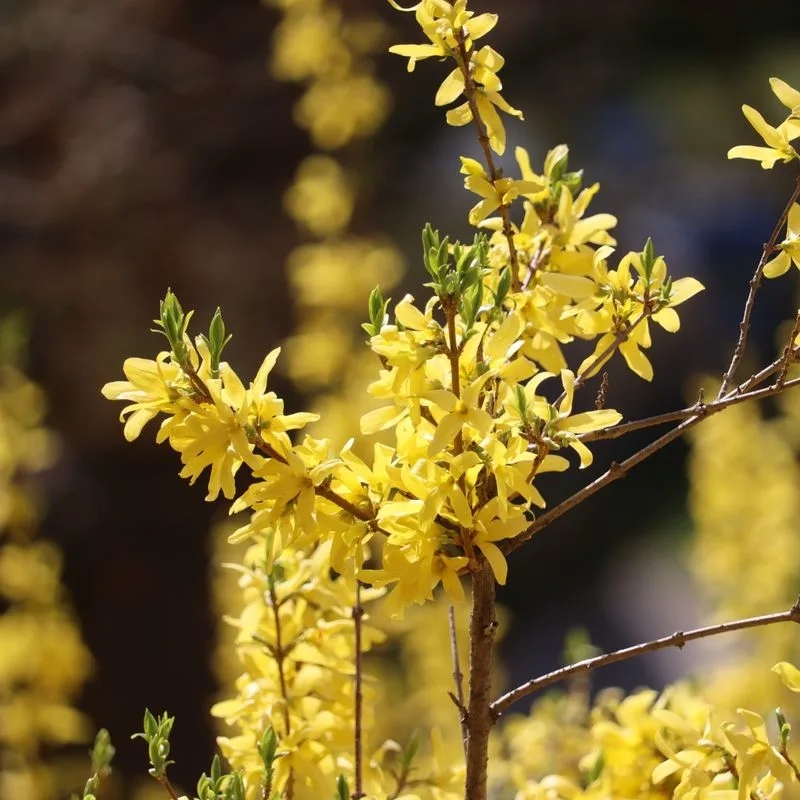
Forsythia heralds the arrival of spring with its golden cascade of blossoms. Its cheerful blooms are among the first to appear, creating an early-season spectacle. Thriving in full sun, Forsythia is perfect for adding a burst of sunshine to any garden.
This hardy shrub is easy to grow and maintain, requiring little more than occasional pruning. Its fast growth makes it an excellent choice for hedges or privacy screens.
A fun fact: Forsythia was named after William Forsyth, a founding member of the Royal Horticultural Society.
Lilac
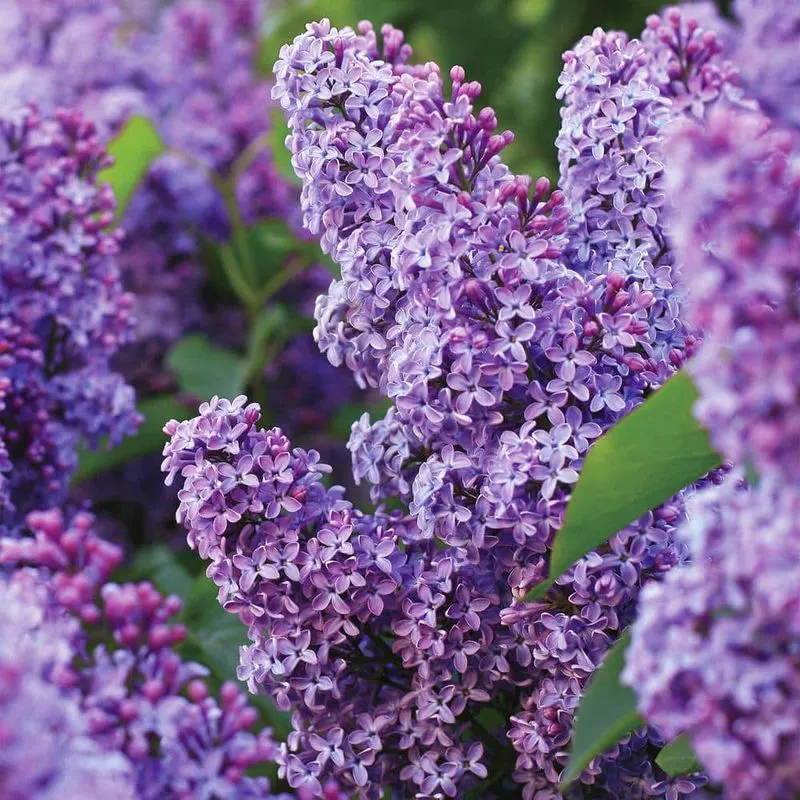
Lilacs are synonymous with spring, offering fragrant blooms that captivate the senses. Their clusters of purple, white, or pink flowers are a classic choice for gardens seeking a touch of nostalgia.
Requiring well-drained soil and plenty of sunlight, Lilacs reward gardeners with a stunning floral display. They can be used as focal points or incorporated into mixed borders.
Lilacs are steeped in history, symbolizing love and remembrance. Their enchanting aroma has inspired poets and perfumers alike, adding to their timeless allure.
Camellia
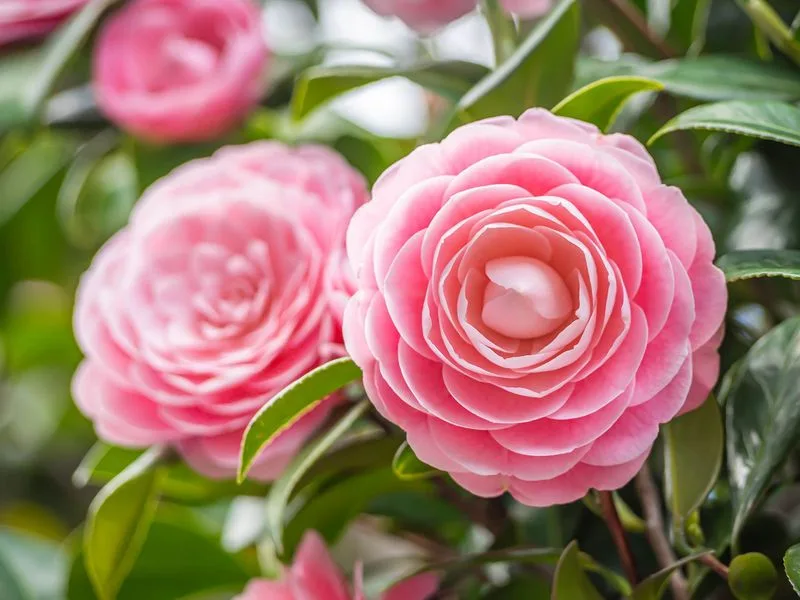
Camellias grace gardens with their elegant blooms, offering color when few others do. Their rose-like flowers range from white to deep red, providing winter interest in mild climates.
Preferring acidic, well-drained soil, Camellias thrive in partial shade, making them versatile companions to other plants. They’re ideal for backgrounds or as standalone specimens.
Did you know? Camellias have been cultivated in Asia for centuries, revered for their beauty and use in tea production, particularly the Camellia sinensis species.
Spirea

Spirea offers a delightful display with its frothy blossoms, adorning gardens with white or pink hues. Its long blooming season and ease of care make it a gardener’s ally.
This shrub thrives in full sun and tolerates various soil types, proving its adaptability. Perfect for borders, it adds softness and texture to landscapes.
A bit of trivia: The name ‘Spirea’ comes from the Greek word for coil, inspired by its spiraling flower clusters. Truly a testament to its intricate beauty.
Weigela
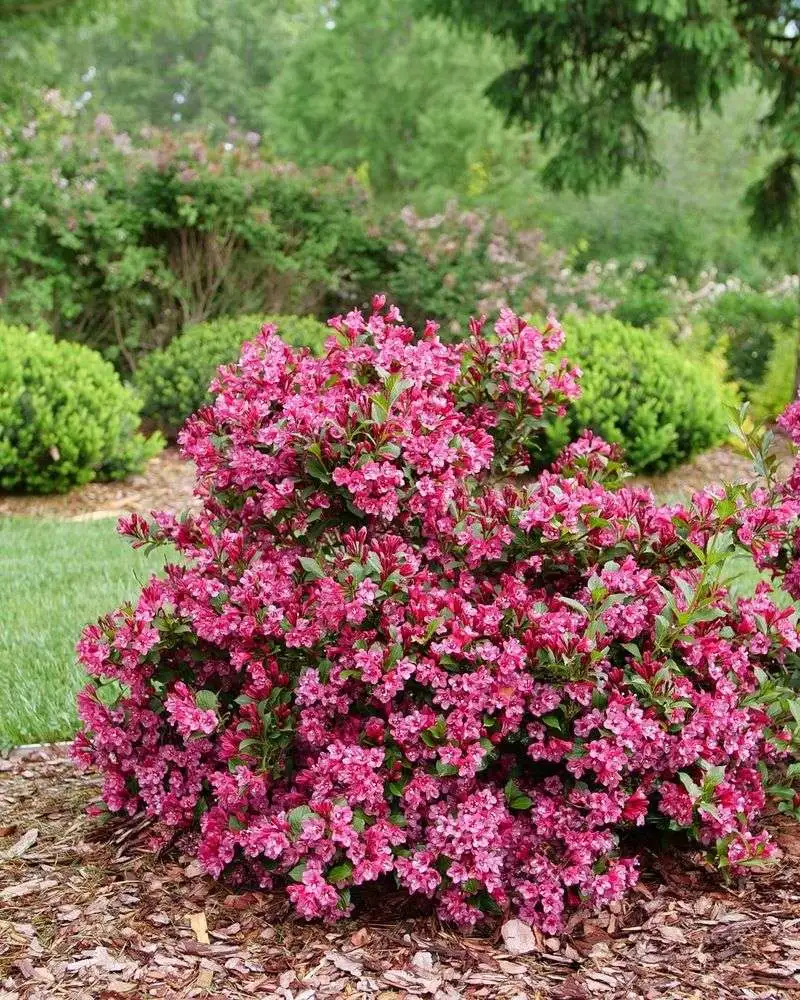
Weigela enchants with its trumpet-shaped flowers, luring hummingbirds and butterflies into the garden. Its profusion of pink and red blossoms are a sight to behold.
Adaptable and resilient, Weigela grows well in full sun to partial shade, withstanding various soil conditions. It serves as an excellent border plant or hedging option.
Did you know? Weigela was named after German scientist Christian Ehrenfried Weigel, and its easy-to-grow nature makes it a staple in gardens worldwide.
Butterfly Bush
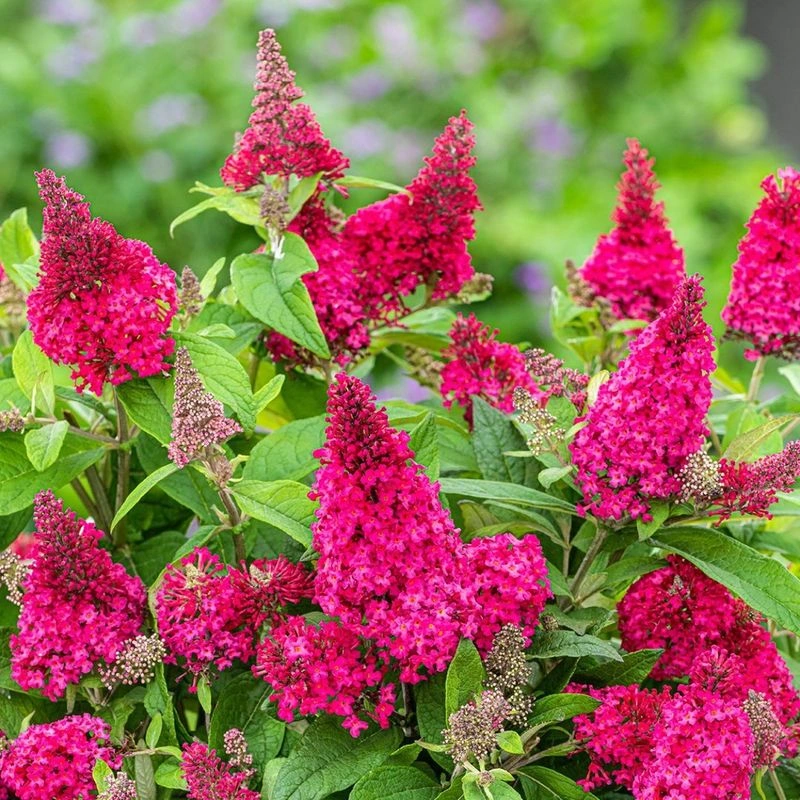
Butterfly Bush is a magnet for pollinators, with its long spikes of vibrant purple, pink, or white flowers. It’s a spectacular choice for those looking to attract butterflies.
Thriving in full sun, this shrub is drought-tolerant and easy to maintain, making it perfect for eco-friendly gardens. Its rapid growth provides quick coverage.
Interesting tidbit: Despite its name, Butterfly Bush is not native to America but has adapted well, becoming a garden favorite across the continent.
Rhododendron
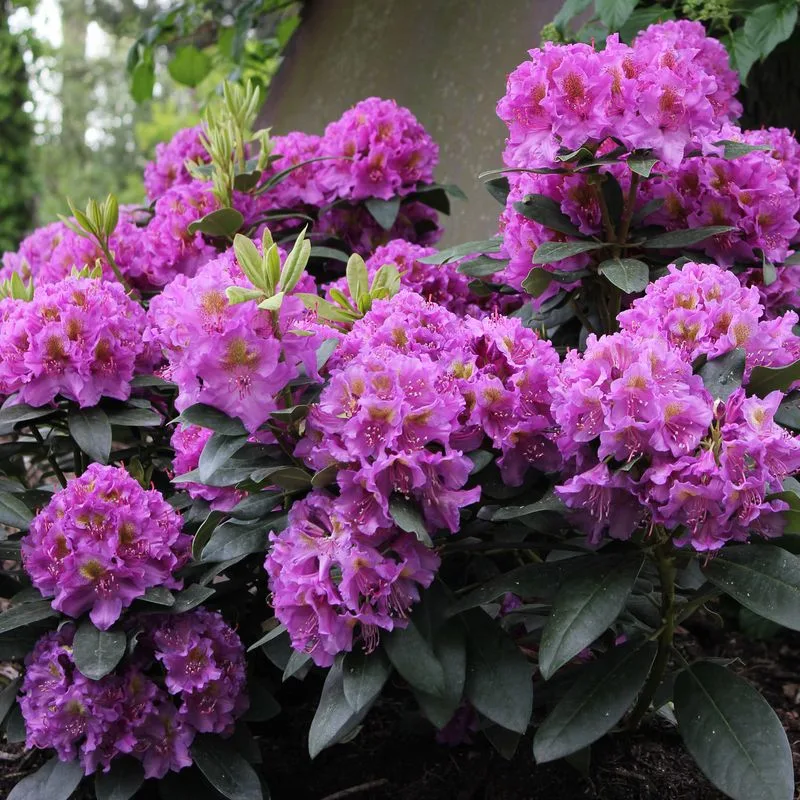
Rhododendrons captivate with their clusters of showy flowers, transforming shaded areas into floral havens. Their blooms vary from pink to purple, offering a range of colors.
Preferring acidic soil and partial shade, Rhododendrons are perfect for woodland gardens or as statement plants. Their evergreen foliage adds year-round interest.
Fun fact: The name ‘Rhododendron’ comes from the Greek words for rose and tree, reflecting the beauty and grandeur of this beloved shrub.
Viburnum
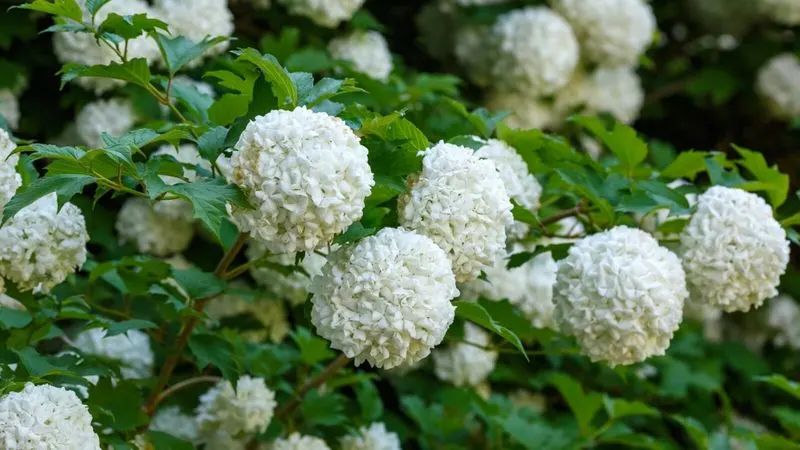
Viburnum offers a multi-seasonal appeal with its fragrant flowers and colorful berries. Its white blooms transition to red, attracting both birds and admirers.
Requiring minimal care, this shrub adapts to various conditions, thriving in full sun or partial shade. It’s ideal for hedges or mixed borders.
Did you know? Viburnum has a rich history in folklore, often seen as a symbol of protection and anticipation in many cultures.
Mock Orange

Mock Orange entices with its citrus-scented blooms, reminiscent of orange blossoms. Its white flowers are both beautiful and fragrant, adding sensory delight to gardens.
Thriving in well-drained soil and full sun, Mock Orange is perfect for informal hedges or as a fragrant border plant. Its low maintenance nature suits busy lifestyles.
A fun fact: Despite its name, Mock Orange isn’t related to citrus trees. Its fragrance, however, is a close mimic, fooling many with its delightful scent.
Abelia
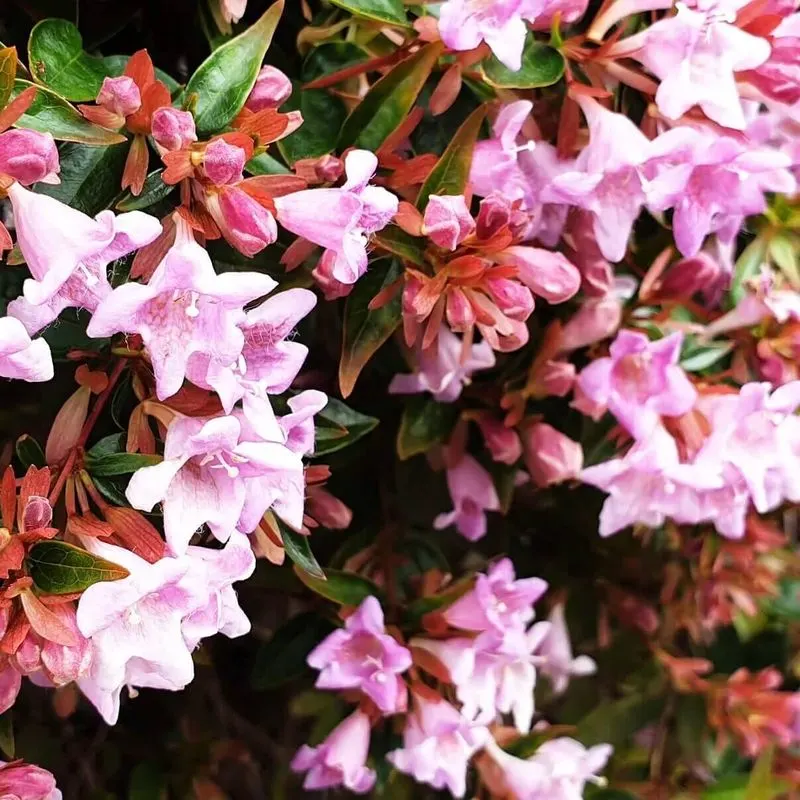
Abelia is known for its delicate blooms and arching branches, bringing graceful movement to gardens. Its pink and white flowers attract pollinators throughout the summer.
This shrub thrives in full sun to partial shade, preferring well-drained soil. It’s an excellent choice for borders, adding elegance to any landscape.
Did you know? Abelia is named after Dr. Clarke Abel, a British physician and plant collector who contributed significantly to botany in the early 19th century.
Deutzia
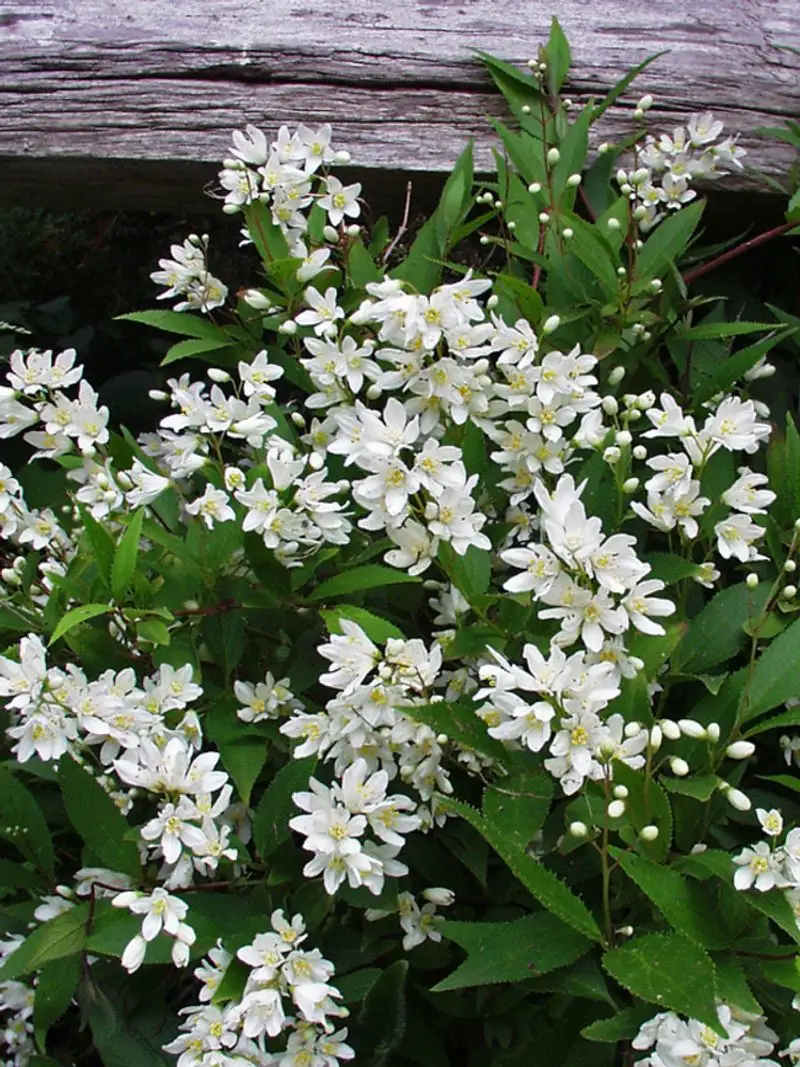
Deutzia captivates with its delicate white blooms, creating a cloud-like effect in gardens. Its easy-going nature and long blooming season make it a gardener’s friend.
Preferring well-drained soil and full sun, Deutzia is versatile, fitting into a variety of garden styles. It’s ideal for borders or as a stand-alone feature.
A quirky fact: Deutzia is named after Jean Deutz, a Dutch patron of botany, known for his passion for plant collection and cultivation.
Potentilla
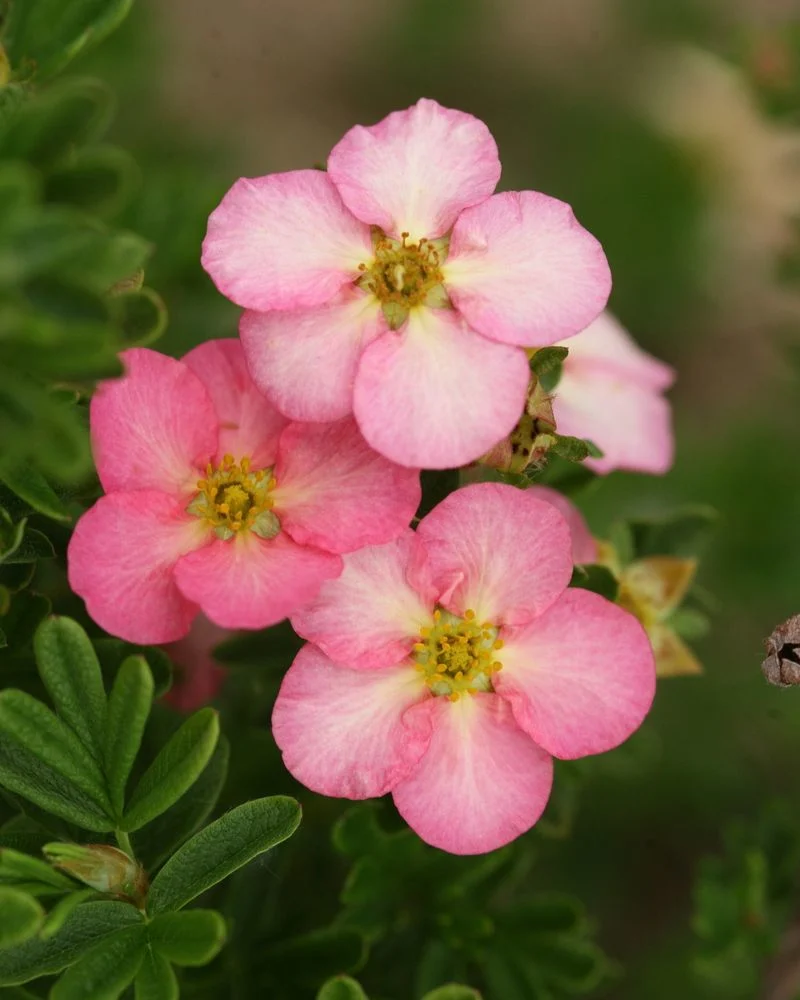
Potentilla bursts forth with cheerful yellow flowers, providing color from spring to fall. Its low-maintenance nature and adaptability make it a favorite among gardeners.
This shrub thrives in full sun and well-drained soil, offering versatility in landscaping. It’s perfect for ground cover or mixed borders.
Did you know? Potentilla is often associated with healing properties in folklore, symbolizing strength and resilience throughout various cultures.
Rose of Sharon
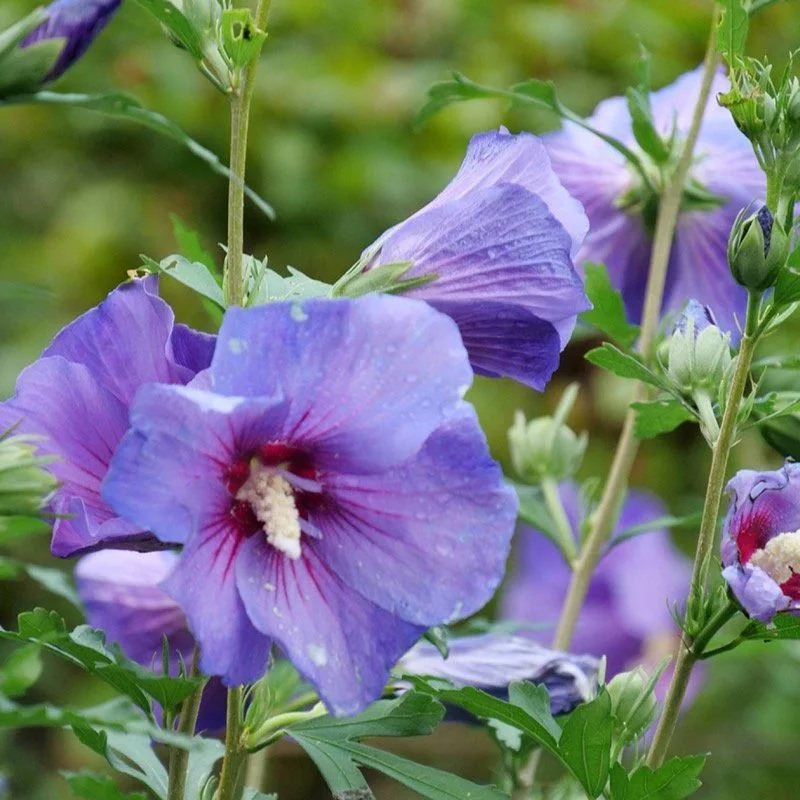
Rose of Sharon brings tropical flair to gardens with its large, hibiscus-like blooms. Flowering from late summer into fall, it adds vibrant color when others begin to fade.
This shrub prefers full sun and adaptable to many soil types, offering flexibility in garden design. It’s excellent for hedges or as a focal point.
Fun trivia: Although called Rose of Sharon, this plant isn’t a rose. Its name is inspired by biblical references, adding a touch of mystique to its charm.
Beautyberry
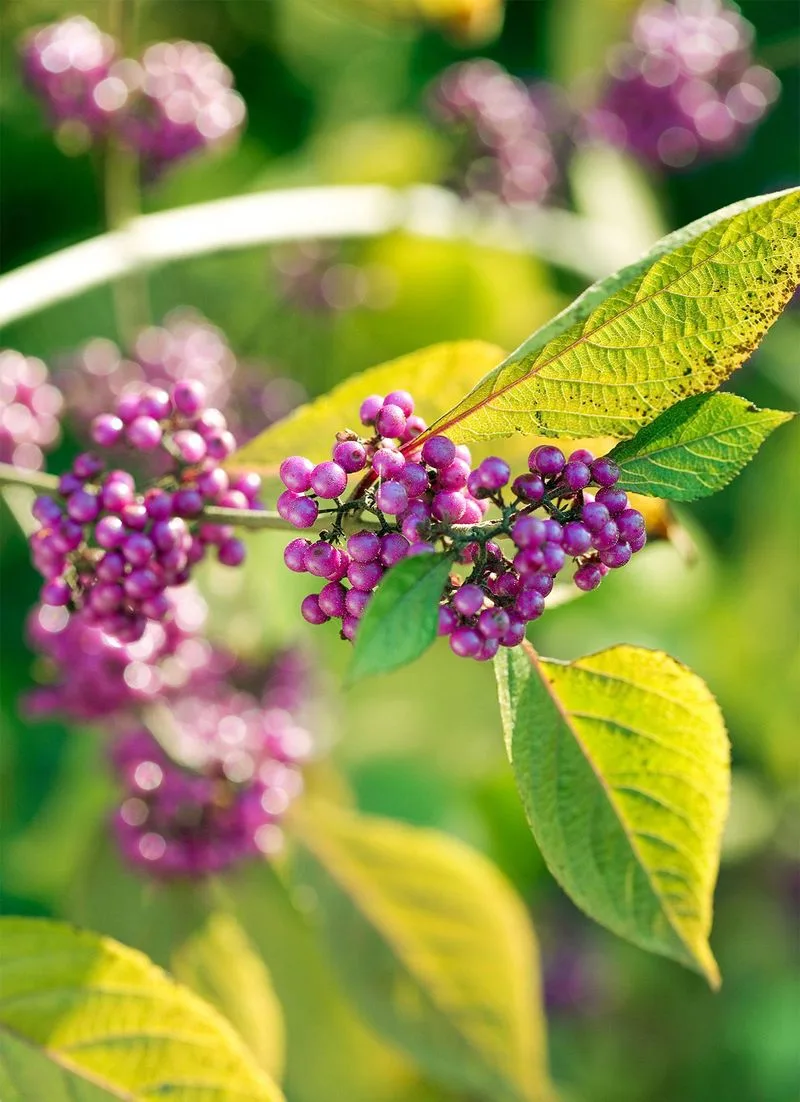
Beautyberry stands out with its clusters of vivid purple berries, drawing attention in the garden. Its striking appearance offers visual interest through fall and winter.
Thriving in full sun to partial shade, Beautyberry is low-maintenance, making it a practical choice for gardeners. It works well in naturalistic or wildlife gardens.
Did you know? Beautyberries are often used in traditional medicine and are known to repel insects, adding functional value to their ornamental appeal.
Abutilon
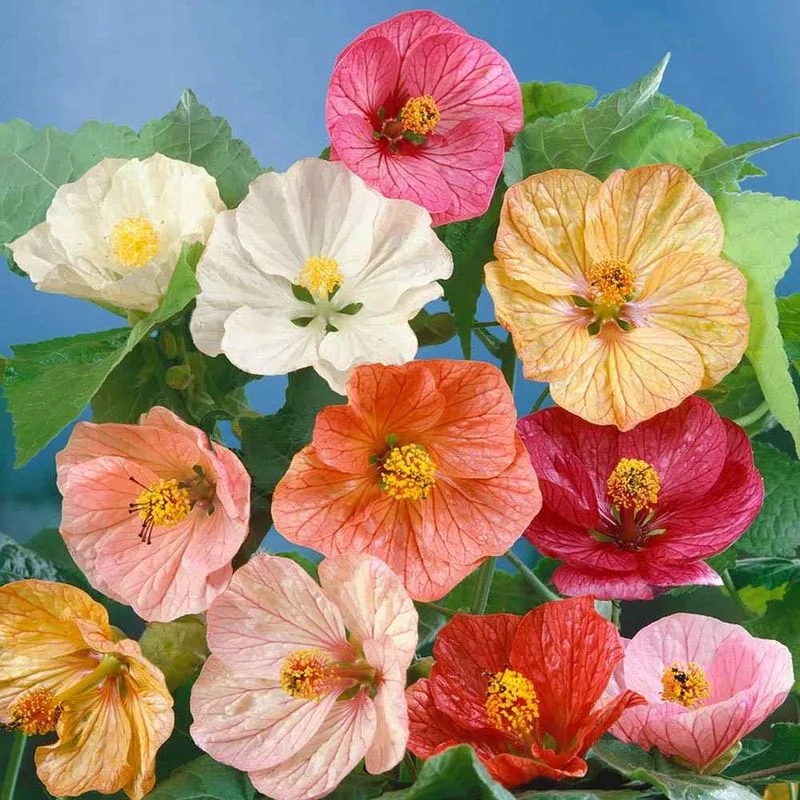
Abutilon, often called the flowering maple, delights with its bell-shaped blooms. Its cascading flowers add a touch of the exotic to gardens.
Preferring full sun or partial shade, Abutilon is versatile, growing well in borders or containers. Its long blooming period ensures ongoing visual appeal.
Did you know? Abutilon’s common name, flowering maple, comes from the resemblance of its leaves to those of maple trees, though they are not related.
Heavenly Bamboo
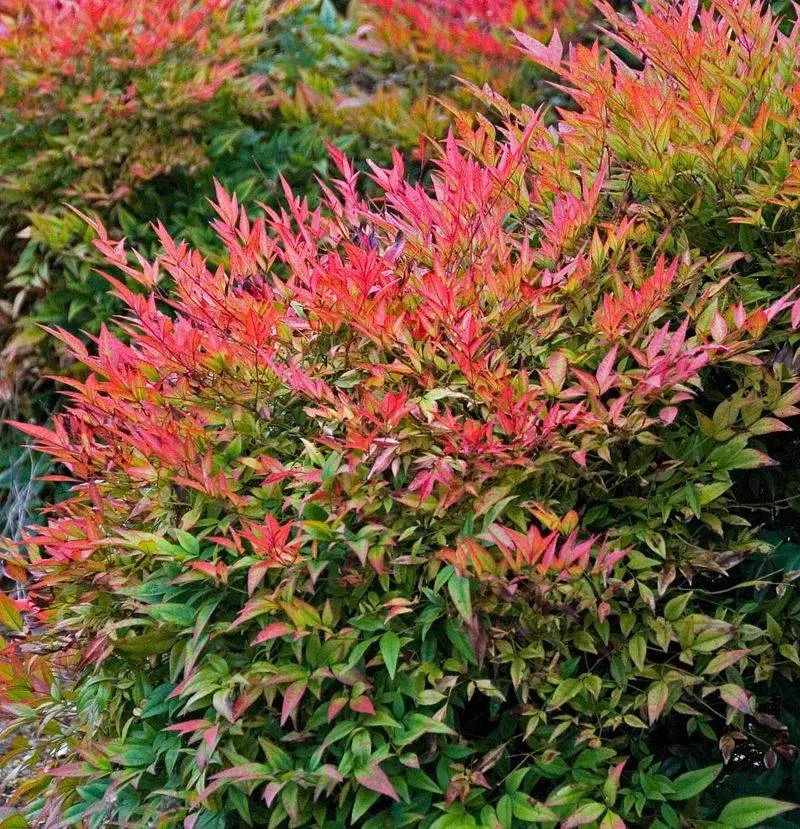
Heavenly Bamboo enchants with its bamboo-like appearance, boasting red berries and fine foliage. Its evergreen nature offers year-round beauty.
This shrub thrives in partial shade and well-drained soil, fitting seamlessly into a variety of garden settings. It’s perfect for adding vertical interest.
Did you know? Despite its common name, Heavenly Bamboo is not a true bamboo. Its botanical name is Nandina domestica, reflecting its unique identity.

